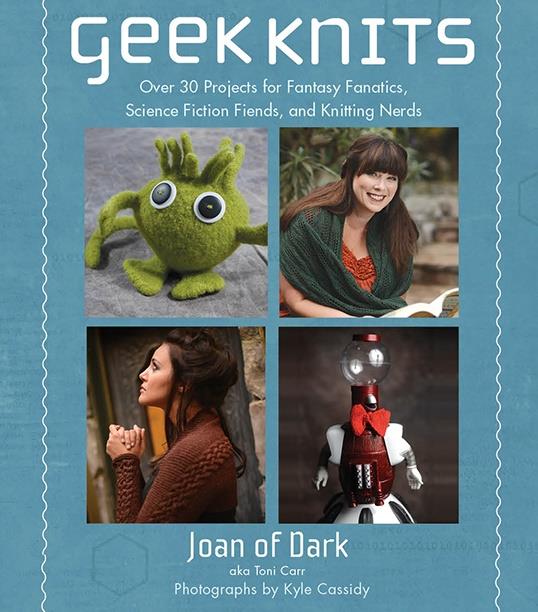(1) NEW DAY JOB. Congratulations to Uncanny Magazine’s Lynne M. Thomas who has been appointed to head the Rare Book & Manuscript Library of the University of Illinois at Urbana- Champaign, one of the largest repositories for rare books and manuscripts in the United States: “University of Illinois alumnus to head Rare Book and Manuscript Library”
Exactly 20 years after starting work as a graduate assistant in the Rare Book and Manuscript Library, Lynne M. Thomas is returning as the new head of the library.
Thomas, who earned her master’s degree in library and information sciences at the University of Illinois in 1999, has been the curator of rare books and special collections at Northern Illinois University since 2004 and the head of distinctive collections there since 2014. She’ll begin her appointment at the library and assume the Juanita J. and Robert E. Simpson Rare Book and Manuscript Library Professorship on Sept. 1.
While working at Northern Illinois University, Thomas helped grow its holdings of the papers of contemporary sf authors.
(2) PUBLICATION OF BLACK SFF WRITERS. Fireside Magazine has issued “The 2016 #BlackSpecFic Report” (follow-up to its 2015 report):
We are considering the field both with and without the “People of Colo(u)r Destroy!” special issues of Lightspeed, Nightmare, and Fantasy Magazine, since they constitute a project that is limited to one year. Without these issues, a sample of 24 professional SF/F/H magazines yielded 31 stories by Black authors out of 1,089 total stories — that’s 2.8% — while 2.9% of 2016’s published unique authors are Black. In 2015 we found figures of 1.9% and 2.4%, respectively. While there’s no way to determine yet if these small increases are evidence of gradual long-term improvement or just normal variation — two years is too short a trajectory for that — perhaps we can find a cautious degree of optimism…..
Effects of the “People of Colo(u)r Destroy!” Issues
In spite of comprising a tiny portion of the field’s story volume, the “PoC Destroy” issues collectively contained over 20% of 2016’s stories by Black authors. They alone raise the 2016 field-wide ratio by nearly a full percentage point, from 2.8% to 3.6%. Put another way: any improvements that took place from 2015 to 2016? The “PoC Destroy” issues are responsible for about half….
Where Do We Go From Here?
Again, we think there’s reason to have a degree of optimism. Some magazines made substantive changes to their editorial staffs and marketing strategies subsequent to the 2015 report, which was released late enough last year that any resulting improvements would impact only 2017 and beyond. It’s for this reason that this 2016 follow-up is not a comparative analysis but rather should serve as a baseline for comparison in future years.
Progress isn’t always linear; not all magazines have equal resources or lead times, which is why we want to hear from editors and publishers. What are your strategies for combating low publication rates of Black authors? Please answer our survey to let us know.
Black SF/F writers: we’d like to hear your comments and suggestions for how we can improve future reports. This also goes for data collection; we’re working purely from what’s publicly available on the Internet, and we don’t want to force people to publicly self-identify in order to be counted. If you suspect your stories are not included in this count and would like them to be, just want to double check, or have any other concerns — please let us know. Our email address is [email protected]; correspondence will be kept confidential.
(3) CHIPPING IN. A Scroll last month talked about one man getting chipped; now it’s an entire company workforce: “Wisconsin company Three Square Market to microchip employees”.
Three Square Market is offering to implant the tiny radio-frequency identification (RFID) chip into workers’ hands for free – and says everyone will soon be doing it.
The rice grain-sized $300 (£230) chip will allow them to open doors, log in to computers and even purchase food.
And so far, 50 employees have signed up for the chance to become half-human, half-walking credit card.
(4) GAME OF SIMPSONS. The Verge has learned “Matt Groening is making an animated medieval adult fantasy with Netflix” called Disenchantment.
Netflix announced today that Matt Groening, creator of The Simpsons and Futurama, will be developing a medieval animated adult fantasy called Disenchantment. It’s scheduled to begin streaming on Netflix in 2018.
The series’s protagonist is a young, “hard-drinking” princess named Bean (Broad City’s Abbi Jacobson), and her two male companions are a “feisty elf” named Elfo (Nat Faxon) and a demon named Luci (Eric Andre). While both The Simpsons and Futurama have dynamic, fleshed-out female characters, this is Groening’s first series with a clear female lead.
Rough Draft Studios, the studio that does the art for Futurama, will animate Disenchantment. From the few details Netflix is offering, it’s easy to imagine a sort of epic-fantasy version of Futurama, with the same acerbic, absurdist humor as Groening’s other shows. In the US, Netflix doesn’t have a series that fits this exact bill, though Archer may come closest. (Netflix also carries Futurama, so Disenchantment should fit in.)
(5) ROLL THE BONES. Tom Galloway sent this link with the comment, “Curiously, ‘Santa Fe, NM’ isn’t given as a location from which large bets would raise suspicions…” — “Growing Strong: Inside the Burgeoning ‘Game of Thrones’ Gambling Business”.
Increasingly, Thrones also lends itself to speculation in the financial sense of the word. As Thrones has ascended to its singular place in the splintered TV firmament, it’s not only come to be covered like the Oscars and the Super Bowl, but it’s started to support a similar secondary market of rumors and wagers. Thanks to the series’ big built-in audience, large (if shrinking) cast of characters, and uncertain endgame, Game of Thrones and gambling go together like lovestruck Lannister (or Targaryen) twins.
Some Thrones-related betting contests, like The Ringer’s Thrones Mortality Pool, are just for fun. But in recent years, a number of ostensible sportsbooks have gotten in on the action, with prominent sites such as Sportsbet, MyBookie.ag, and Pinnacle (which debuted its Thrones odds this year) trying to capture a piece of the (hot) pie. The best-known of these books is Bovada, an online gambling and casino-games site owned by a group based in Québec.
Bovada began publishing prop bets for Game of Thrones in 2015. Since the start, those bets have been the personal province of Pat Morrow, who’s been with Bovada for a decade and has served as the site’s head oddsmaker for the past four years. Technically, Morrow oversees all of the site’s wagers, but he’s much more likely to delegate work on the data-based bets that make up most of the site’s offerings. The Thrones odds come from his head alone, both because they require a personal touch and because no one else at Bovada is as qualified to apply it
(6) TODAY IN HISTORY
- July 25, 1969 – In theaters: The Valley of Gwangi, a schlockfest of cowboys vs. dinosaurs in Forbidden Valley
(7) SPACE STYLES. The Fashion Spot is telling everyone “Gucci’s Fall 2017 Campaign Is Out of This World!”
Alessandro Michele continues to raise the bar at Gucci while refusing to follow the rest of the fashion pack. His advertising campaigns for the iconic Italian fashion house are often extremely well-received by our hard-to-thrill forum members (despite a few controversies). The newly unveiled Fall 2017 campaign, captured by Glen Luchford, is on another planet — literally. Yes, Michele revisits his sci-fi concept, going all-out for the new mainline campaign — complete with dinosaurs, hovering spaceships, models channeling their inner alien and so much more.
(8) T AND SEE. Lisa Allison at Adventures In Poor Taste lists her faves: “SDCC 2017: Top 5 nerdy t-shirts”. John King Tarpinian says he’d have bought this shirt –
#2: Vampires Don’t Do Dishes
I was drawn to this one for a few reasons. It pairs a quote from What We Do in the Shadows starring Jemaine Clement with a sort of buck toothed, vampire. It’s fun, creepy and artistic. The Benday dots on the sides are a nice touch.
(9) BITER BIT. A Discovery magazine columnist showed several fee-for-publication medical journals seem to have nonexistent professional standards, in “Predatory Journals Hit By ‘Star Wars’ Sting”.
A number of so-called scientific journals have accepted a Star Wars-themed spoof paper. The manuscript is an absurd mess of factual errors, plagiarism and movie quotes. I know because I wrote it….
Four journals fell for the sting. The American Journal of Medical and Biological Research (SciEP) accepted the paper, but asked for a $360 fee, which I didn’t pay. Amazingly, three other journals not only accepted but actually published the spoof. Here’s the paper from the International Journal of Molecular Biology: Open Access (MedCrave), Austin Journal of Pharmacology and Therapeutics (Austin) and American Research Journal of Biosciences (ARJ) I hadn’t expected this, as all those journals charge publication fees, but I never paid them a penny.
So what did they publish? A travesty, which they should have rejected within about 5 minutes – or 2 minutes if the reviewer was familiar with Star Wars. Some highlights:
“Beyond supplying cellular energy, midichloria perform functions such as Force sensitivity…”
“Involved in ATP production is the citric acid cycle, also referred to as the Kyloren cycle after its discoverer”
“Midi-chlorians are microscopic life-forms that reside in all living cells – without the midi-chlorians, life couldn’t exist, and we’d have no knowledge of the force. Midichlorial disorders often erupt as brain diseases, such as autism.”
“midichloria DNA (mtDNRey)” and “ReyTP”
And so on. I even put the legendary Tragedy of Darth Plagueis the Wise monologue in the paper…
…This matters because scientific publishers are companies selling a product, and the product is peer review. True, they also publish papers (electronically in the case of these journals), but if you just wanted to publish something electronically, you could do that yourself for free. Preprint archives, blogs, your own website – it’s easy to get something on the internet. Peer review is what supposedly justifies the price of publishing.
[Via Ansible Links.]
(10) PASSING THE HELMET. And in other bogus Star Wars news, Darth Vader has started a GoFundMe: “Help Me Build a Death Star!”.
The Empire is under attack. We are in urgent need of funds to construct a Death Star to crush this rebel alliance!
It had raised zero of its $900 million goal when I last checked in.
(11) SUCKING UP DATA. Speaking of world domination – Eric Persing shared this link with the comment, “This is pretty much the beginning of how the robots take over humanity…right? The vacuum maps your home, sells your home layout to the highest bidder and before you know it, the toaster is trying to kill you.” — “Roombas have been mapping your homes for years, and that data’s about to be sold to the highest bidder”.
As Reuters reports, Roomba maker iRobot is bullish on the prospect of selling what it learns about your home to whoever might want it. “There’s an entire ecosystem of things and services that the smart home can deliver once you have a rich map of the home that the user has allowed to be shared,” iRobot boss Colin Angle told Reuters.
If that sounds more than a little creepy that’s because, well, it is, but companies pushing into the smart home market would most certainly be willing to pony up the dough for the data. Products like smart speakers, security monitors, high-tech thermostats, and many other gadgets could potentially benefit from knowledge of your home’s layout, but in order for iRobot to actually sell archives of the data, it would likely need to be anonymize — that is, scrubbed of any personally identifiable information and lumped in with countless others.
(12) NOT MY FAULT. Munchkin is concerned:
Have so far resisted the urge to set my WorldCon badge sub-title to 'Well I didn't vote for Brexit'
— Brian M(ysterious) Milton (@munchkinstein) July 24, 2017
(13) PUPPY RADAR. Camestros Felapton has compiled a list of authors and works being promoted for the Dragon Awards in “Time for those Dragon Projections!”
- The titles listed are based on what I have found trawling the web looking for people who were, to some degree or other, promoting works to be nominated for a Dragon Award. I found a lot but who knows what I missed. I did find some stuff on Facebook but it and other places are hard to search inside of. Also, maybe some authors are promoting the Dragons like crazy in forums I cna’t access or on their email lists. Who knows? So large pinches of salt please.
- There is though a ‘status’ column and that is even a greater testament to hubris in data collection. The higher the status the more wallop I think the promotion of the work had – either in multiple places or by venues with known impact (e.g. the Rabid slate). “Low” though also includes stuff whose promotional impact I don’t know. Some are authors I don’t know but who may have some legion of highly devoted followers ever ready to throw their bodies and email addresses at an awards website. It is NOT any kind of assessment of the quality or even the popularity of the work – so if you an author and you see ‘very low’ next to your book, don’t be disheartened.
- So it is all a bit pointless then? No, no. Basically the more stuff on the list that appears as Dragon Awards finalists, the more the finalists were determined by overt public campaigning on blogs – and predominately from the Rabid and Scrappy corners. The less stuff on the list making it as finalists, then the less impact that kind of campaigning had on the Dragon Awards.
(14) THE SHARKES BITE. The Clarke Award will be announced this week. The Shadow Clarke jury dashes off one more review, then begins analyzing the Sharke experience and the future of the Clarke award.
An inspector investigates the case of a disappeared man but despite his occasional dreams of solving the case, he never uncovers the truth and only succeeds in stripping away layer after layer of appearance until nothing is left. Infinite Ground is a kind of metatext in which the ostensible missing person investigation in the plot simultaneously functions to interrogate fundamental aspects of being such as identity and even existence, as though the world itself is also text. By the end of MacInnes’s novel we are no longer sure if the man, the inspector and the society they come from are still in existence or, indeed, if they ever existed at all. Among the many facets of the text is a strain of the kind of hermeneutic deconstruction that marks out my natural enemies in any literature faculty. ‘At the heart of meaning there is no meaning’ is the refrain of this theme but it often seems to coexist very comfortably with institutional power structures and academic management hierarchies. MacInnes takes this to extreme levels of quantum indeterminacy and fractal microbiology that defy any kind of systematisation, however there is still a level of destruction wrecked on everyday life in texts like this which I find uncomfortable. I am reminded of reading Paul Auster’s different, but not entirely dissimilar New York Trilogy and turning afterwards to Dashiell Hammett for an equally relentless but more grounded interrogation of social existence. MacInnes, however, had me turning to Hammett within 30 pages…
So, what did we achieve here?
If nothing else – apart from a few good jokes floating around the web about who has read which Iain Banks novels – we have demonstrated why the actual Clarke Award juries don’t make their deliberations public. Nevertheless, I do think the level of discussion and analysis we have provided has been a positive feature even when this has provoked a certain amount of pushback. There hasn’t been a hidden agenda and the motivations and various criteria used by members of the shadow jury have become reasonably clear across the process. Anyone looking at the project from the outside is in a position to weigh up the assumptions and judgements made and to criticise these for deficiencies; and, of course, a number of people have done this. I have found it interesting to read the discussion on File770 and twitter as well as on the comment boxes on the Sharke posts themselves. Some of this seems fair and some seems unfair; but that is often the way of things.
- “The Shape of Things to Come: some possible runners and riders in next year’s Clarke: by Nina Allan”
As this year’s Clarke festivities wind inexorably towards their close, I thought it would be interesting to cast an eye over the landscape ahead of us. It does the heart good to have something to look forward to, after all, and what could be more fun than making a few early advance predictions about next year’s Clarke Award?
I’m not here to discuss the more obvious entries. We all know that Kim Stanley Robinson, Cory Doctorow, Kameron Hurley and Ann Leckie have new novels out this year and everybody will be talking about them as possible contenders soon enough. As the books I’m most interested in tend to be those that hover around the edges of genre, I thought I’d do better to focus upon novels published by mainstream imprints that might otherwise be overlooked by SFF commentators. With a little over half the year gone, there will inevitably be titles I’ve overlooked, authors I’ve not come across yet. This is just a tiny sample of what next year’s Clarke jury might have to look forward to.
And as a bonus, a review of the actual Clarke shortlist from Strange Horizons. Interestingly, the reviewer has a good go at linking the 6 nominees together thematically, even though the Sharkes were of the opinion that the shortlist lacked a coherent theme…
In theme, style, and content, the 2017 Clarke Award shortlist—Emma Newman’s After Atlas, Yoon Ha Lee’s Ninefox Gambit, Tricia Sullivan’s Occupy Me, Becky Chambers’s A Closed and Common Orbit, Colson Whitehead’s The Underground Railroad, and Lavie Tidhar’s Central Station—is a diverse set. However, in different ways, each of these books speaks to [Jill] Lepore’s concern about “a fiction of helplessness and hopelessness.” Perhaps, as a function of the times we are in, these books do not heed Le Guin’s call to envision alternatives to how we live. The futures—and in one case, the past—that these books offer is either dystopic or close to dystopic, in utterly recognizable ways. Many of the pregnant battles of today—for democracy, for equality, for privacy, and against universal surveillance—have in these pages been lost for good, and there is no pretence that any individual, or group of individuals, has the power to transform the world. There is little in the way of grand narrative or vaulting ambition in terms of the stories that these novels set out to tell. Far greater—and in some cases, exclusive—focus is placed on human relationships, on more mundane struggles; it is as if Marx’s utopianism of overthrowing centralized power has been replaced by Foucault’s bleaker understanding of power’s ubiquity, and the dispiriting realization that the struggle is limited to daily, quotidian acts. Above all, there is—almost—a palpable mistrust of any radical re-imagination of the ways in which society might be organised.
(15) CARRIE VAUGHN. Lightspeed poses questions to the author in “Interview: Carrie Vaughn”.
You explored Enid’s world in your Hugo-nominated short story “Amaryllis,” which, contrary to most post-apocalyptic stories, has a positive ending. What made you want to explore the dark side of this world at novel length in Bannerless?
It’s a multifaceted culture with both good and bad to it, and Enid is in a unique position to see both. I went into the story assuming that a culture built up like this one is, with a huge amount of scrutiny to go along with the community building, is going to have some unintended consequences, such as the bullying of outsiders.
(16) CONNECTIONS. Matt Mitrovich reviews Nick Woods’ Azanian Bridges for Amazing Stories.
Azanian Bridges is a well-written novels that tackles a difficult period of South African history that, in the grand scheme of things, only recently ended. I read it shortly after I finished Underground Airlines and found myself comparing the two novels. Both deal with de jure racial inequality in two different countries continuing long after it ended in our timeline. To be honest, I felt Underground Airlines had a bigger impact on me since I am an American and have a better understanding of my own country’s past, but if you have any knowledge of South African history, there is enough about this world that Nick created for you to enjoy.
And yet the actual history plays a secondary role to the primary purpose of Azanian Bridges: that we can have peace if we can bridge the divide between peoples.
(17) COSPLAY AT COMIC-CON. ScienceFiction.com shares stunning photos in “SDCC 2017: Cosplay Gallery Part 1”.
(18) ONE DOES NOT SIMPLY EVICT THE SUPERNATURAL. Todd Allen continues The Mister Lewis Incidents — a monthly short form satirical horror detective / urban fantasy series featuring the adventures of a “physics consultant” who consults on matters that defy the laws of physics. The fourth one is out commercially and the fifth one is in the hands of the crowdfunding folks.
The Gentrified Bodega Investigates the Secrets of a Shady Landlord
Wherever rents are rapidly rising, and especially where there’s rent control, there’s always a problem with landlords stepping outside the law to evict renters. But what happens when there’s something in the building that isn’t human and isn’t ready to leave?
About The Gentrified Bodega
“The neighborhood was improving and people were dying to move in. Then their bodies were turning up in the back aisle of the bodega. The building wove a web of shady evictions, fake leases and unexplainable deaths. Can Mister Lewis discover the secret of the gentrified bodega or will the housing crisis be solved by mass attrition?”
The Gentrified Bodega is available on Amazon Kindle, B&N Nook and Kobo or direct from the publisher.
(19) ALL WET. Aquaman Movie 2018 Teaser Trailer.
[Thanks to John King Tarpinian, Chip Hitchcock, Cat Eldridge,JJ, Todd Allen, Carl Slaughter, DMS, and Mark-kitteh for some of these stories. Title credit goes to File 770 contributing editor of the day JJ.]





